Photo: The fresh green hills of Briones Regional Park in spring, looking toward Mount Diablo, Contra Costa County, California
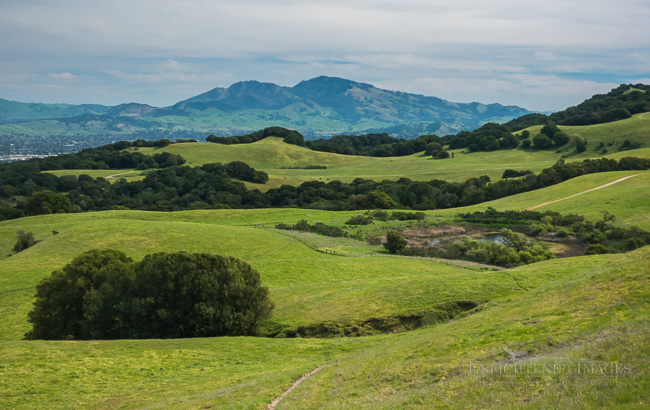
One of the things I always tell participants in my workshops, presentations, and especially when I’m doing professional image critiques or portfolio reviews, is something that is often lost or not truly recognized by many beginning photographers; namely that photography is all about communication. This is especially true for most of the ‘I-just-like-taking-pretty-pictures’ crowd. Simply put, as a media, photography is a form of visual communication. As photographers, we use the frame of the camera as a conduit for expressing our vision of the world around us. Our goal as a visual communicator should be to have a clear and focused idea of what story we are trying to convey with our photos. It should then be much easier for the viewer to pick up on that story. Hopefully, the result will be that a viewer will share in your emotional connection with your subject, and can internally relate to the message that your image is trying to convey. If you don’t have a clear idea of the story you are trying to convey, or are unable to frame that story in a visually concise manner, you’re very likely to get a quick and dismissive “that’s nice,” as the viewer oh-so briefly looks at, and just as quickly moves on from your photo.
In a recent workshop, a participant asked, “How many photos does it take to make a story?” The simple answer is just One. Every picture should tell a story. If any of your photos aren’t telling a story, then the question begs to be asked, “Why did you take the picture?”
When you are able to take a series of photos, each reinforcing or adding to the others, then the strength and clarity of your story becomes clearer. This works for books filled with beautiful landscape pictures, a diary of travel scenes, to photojournalism-style essays involving any aspect of life, especially the harsh, gritty, or ugly truth that sometimes surrounds us.
Take for example the lead photo in this post. This is Briones Regional Park here in the East Bay hills of the San Francisco Bay Area. It my personal Shangri-La. It is where I hike to get my exercise, to clear my thoughts, refresh my soul, escape, and rejuvenate. The photo shows the fresh green landscape looking as lush as you might expect to find in the rolling hills of the English or Irish countryside, yet it’s mere miles from some of the largest population centers in California.
But what other kind of story about this beautiful place could I tell with my photography? Well, let’s take a look at some of the scenery I encountered on a single day’s hike last week. A friend of mine didn’t think I should waste my time with this, yet I felt a strong personal drive that this was a story that needed to be told. Furthermore, under the ‘Pictures are worth a thousand words’-category, I felt I could use my photography to tell this story in a much stronger fashion than I could than with words alone. What do you think?
 This is an image of a plastic doggie waste litter bag. I’ve been seeing more and more of these left along the trails, as if some ‘responsible’ pet owners think that someone is employed by the park to provide trailside pick-up service for their pet’s waste. This is clearly not the case, as it is well posted that dog owners are responsible for cleaning up after their pets AND packing out the trash; NOT leaving it for others to see or deal with. It’s becoming such an epidemic at our local park that it’s starting to negatively impact on the visitor experience. In fact, just the other day I saw a father walking ahead of me with his family and pointed out a bright orange baggie of dog waste that someone left a few hundred yards from the trailhead and garbage can. In fact, the photo here was taken approximately 100 feet from the parking lot and a trash can. On this hike I encountered nearly a dozen such instances of inconsiderate pet ownership waste. The sadness of it all leaves me feeling like these dog owners are what they leave behind.
This is an image of a plastic doggie waste litter bag. I’ve been seeing more and more of these left along the trails, as if some ‘responsible’ pet owners think that someone is employed by the park to provide trailside pick-up service for their pet’s waste. This is clearly not the case, as it is well posted that dog owners are responsible for cleaning up after their pets AND packing out the trash; NOT leaving it for others to see or deal with. It’s becoming such an epidemic at our local park that it’s starting to negatively impact on the visitor experience. In fact, just the other day I saw a father walking ahead of me with his family and pointed out a bright orange baggie of dog waste that someone left a few hundred yards from the trailhead and garbage can. In fact, the photo here was taken approximately 100 feet from the parking lot and a trash can. On this hike I encountered nearly a dozen such instances of inconsiderate pet ownership waste. The sadness of it all leaves me feeling like these dog owners are what they leave behind.

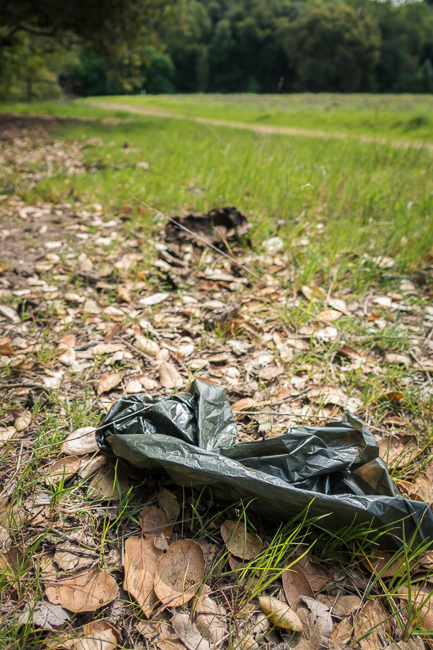
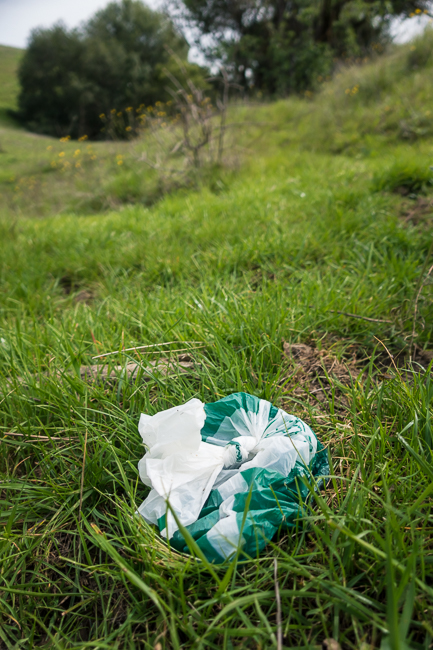
These first four images were all taken within one-quarter mile of the parking lot. But wait… there’s more…
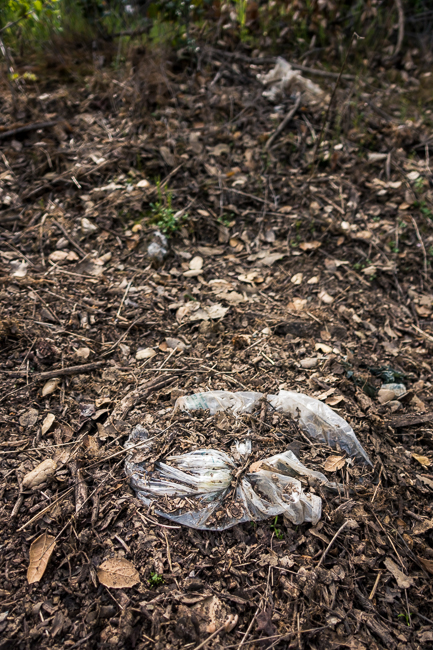
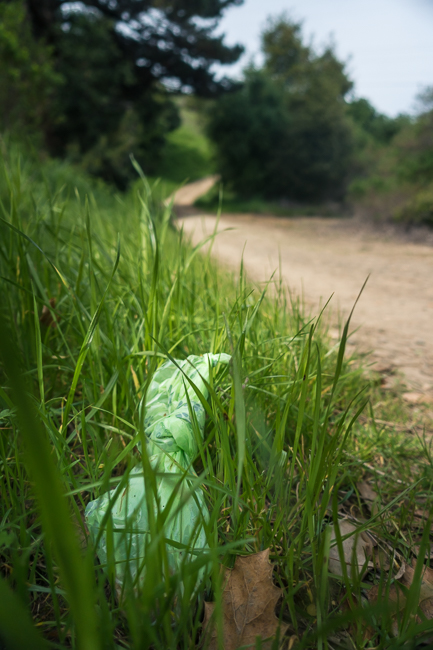
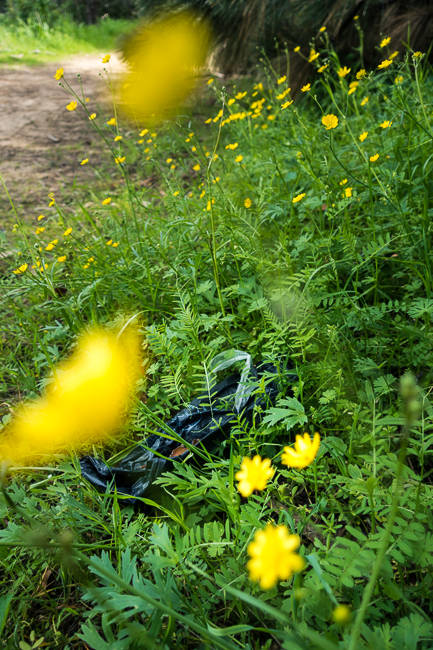
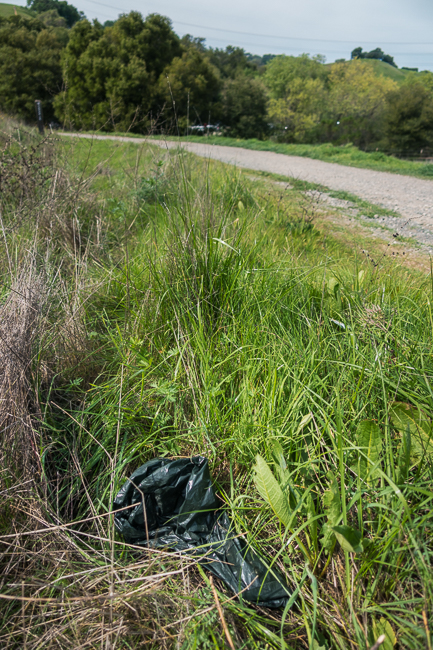
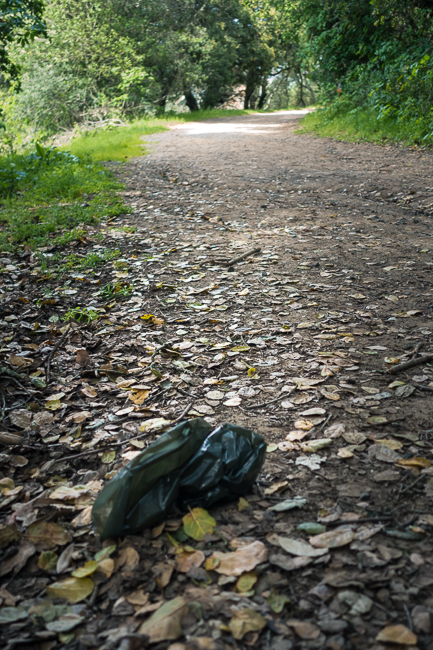
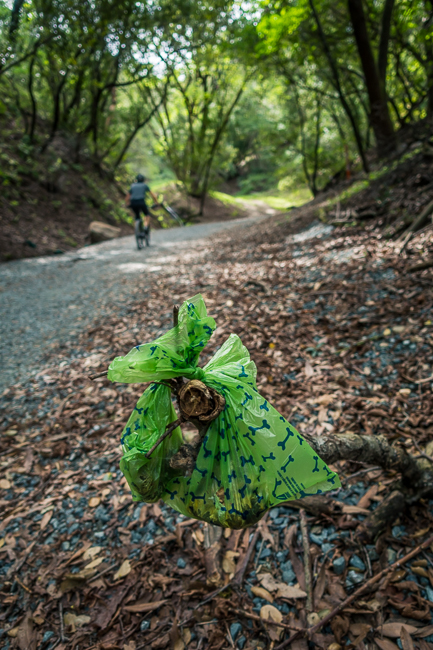
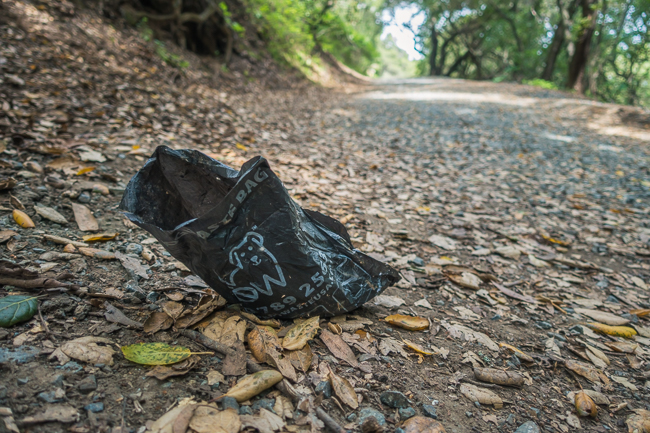
So… Who is my story for? Ideally it’s for the governing board and policy makers at the East Bay Regional Park District.
What story am I trying to tell with these photos? That there’s a growing problem of dog waste bags being left along the trails by irresponsible pet owners, and that this growing problem is having a negative effect on visitor experience.
Do my pictures help convey that story? I hope so.
Is this a waste of my time or efforts? I don’t think so. It’s important to me, and I’m sure it effects other park visitors in a similar manner. If using my photos helps lead to discussion and possible solutions, then it’s definitely worth it.
Do I have any potential solutions that I’d like to pass along to the EBRPD? Yes:
(a) Impose an annual dog-use permit fee, or a daily use permit fee per animal available at the trailheads. The funds from these fees can be used to hire additional park patrol personnel that will clean up and enforce the permit rules. Unfortunately this option punishes all pet owners for the negligent actions of a few pet owners who, beyond all comprehension, clean up their dog’s waste, deposit it into an environmentally unfriendly plastic bag, then leave the bag on the trail to slowly rot over time within view of all who walk by. Again, I say these dog owners truly are what they leave behind.
OR
(b) Use my photos to raise public awareness at all major trail heads. Get rid of the plastic bags all together, and ask pet owners to carry a small plastic trowel and simply toss the dog feces 10-15 feet off the trail. Gosh knows us hikers walk through lots of horse and cow manure that lies in the middle of the trail. I can’t imagine that a little dog scat scattered off in the grass will be any more of an issue. But the plastic bags left behind as a growing source of litter certainly is becoming more and more of an issue.
OR
(c) start charging a daily parking fee at all park lots, or sell an annual parking permit, again with the goal of using the funds to provide trash and litter removal services from all trails within the park system. After all, it’s not just the dog owners who are 100% responsible for litter on the trails, even though they do account for most (90%) of the trash I see on my walks.
In fact on this same day I walked past a mid-fifties couple on the trail. One of them held an empty starbucks cup in their hand. The other cup I found on the side of the trail a quarter mile past where I encountered them… and it wasn’t there on my first trip past that spot. Then there was the bag full of empty red-bull cans and water bottle.

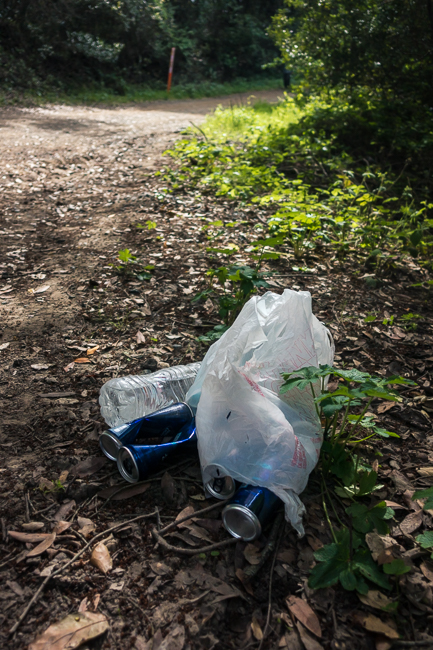
If you’re also a user of the East Bay Regional Parks and notice the same problem, please use this public contact form and let them know. I’ve been assured that messages sent through here are indeed read by real people who care.
Finally, if you’ve managed to read this far, I hope you’ll consider leaving a comment, voicing your opinion or similar experiences, suggestions for the park, or even just to let me know whether you think my efforts at communicating a problem through photos was effective or not.
—
![]()
If you like this post , I would greatly appreciate it if you’d consider sharing this with your friends using one of the Social Media sharing buttons located at the top of this post. You can also sign up to receive free updates by email when future posts are made to this blog.
![]()
—
Gary Crabbe is an award-winning commercial and editorial outdoor travel photographer and author based out of the San Francisco Bay Area, California. He has seven published books on California to his credit, including “Photographing California; v1-North”, which won the prestigious 2013 IBPA Benjamin Franklin Gold Medal award as Best Regional title. His client and publication credits include the National Geographic Society, the New York Times, Forbes Magazine, TIME, The North Face, Subaru, L.L. Bean, Victoria’s Secret, Sunset Magazine, The Nature Conservancy, and many more. Gary is also a photography instructor and consultant, offering both public and private photo workshops. He also works occasionally a professional freelance Photo Editor.

Love this post, Gary. Hope you’re able to bring some attention to this issue. Photography has the potential to be so much more than just pretty sunset photos. Sadly these photos probably won’t get much attention on social media but perhaps the people that are most likely to enable change are not spending their day liking photos on Facebook.
Dog walkers should organize and do regular trail clean-ups before dogs are banned from the trails entirely.
This is a wide spread problem that baffles me. What you bring, you carry out. Yet trash is left everywhere around popular viewpoints and trail heads around my home town of Laguna Beach. And Monday mornings, it can be heartbreaking to walk through our city parks.
In the early 70’s there was a nationwide “Do not Litter” campaign, I think it’s time to do it again
Nice photos. This may seem silly but seems like a big part of the problem is that there are not enough trash cans. They removed them due to staffing shortage but people, clearly, do not want to carry their trash around. It sucks that they decide to drop their trash instead of carry it, but I think this experiment has gone on long enough. All over the country this same problem is manifesting. Why do people not want to carry around baggies of poo or empty sandwich wrappers and cans? Maybe the answer to “Why” is irrelevant, and it’s time to just bite the bullet and get more trash cans. I bet the trash on the ground problem decreases by 90+%. Maybe there can be a volunteer corps that empties trash cans 1x/week?
There is a lot more you can write about in Briones. How about the devastation caused to the park and trails by cattle and to a lesser degree, horses. How about the trail system that is comprised of big fire roads instead of narrow trails that everyone should be able to enjoy. What about the trail repairs done by the ebrpd every spring with a huge scraper which only further damage the trails. This park should be gorgeous, and as you point out, from afar it is…but up close there are lots of different stories, and you have highlighted one of several. Thanks.